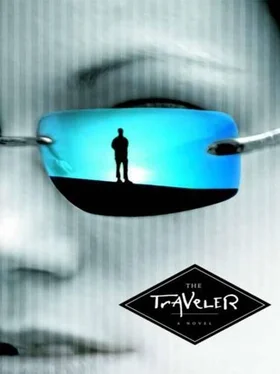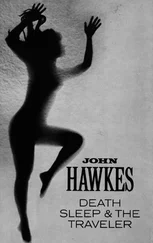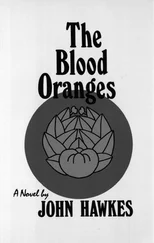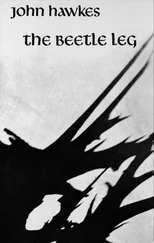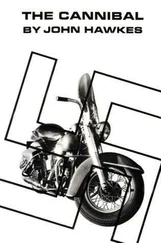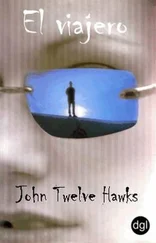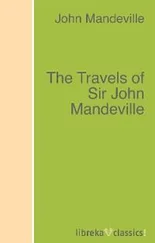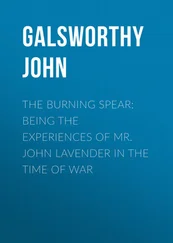“What happens if you can’t find a Pathfinder?” Richardson asked. “How is Michael going to know what to do?”
“There’s another approach. The support staff is investigating different drugs that could act as a neurological catalyst.”
“This is my field and I can tell you that no such drug has been developed. Nothing you take into your body is going to cause a rapid intensification of neural energy.”
“The Evergreen Foundation has a great many contacts and sources. We’re doing everything we can.”
“It’s clear that I’m not being told everything,” Richardson said. “Let me tell you something, Mr. Takawa. That attitude is not conducive to a successful experiment.”
“And what else do you need to know, Doctor?”
“It’s not just the Travelers, is it? They’re only part of a much larger objective-something that involves the quantum computer. So what are we really looking for? Can you tell me?”
“We’ve hired you to get a Traveler into another realm,” Lawrence said. “And all you need to understand is that General Nash does not accept failure.”
* * *
BACK IN HIS office, Lawrence had to deal with a dozen urgent phone messages and more than forty e-mails. He talked to General Nash about the surgical operation and confirmed that the computer center had picked up neural activity from every section of Michael’s brain. During the next two hours, he wrote a carefully worded message that was e-mailed to the scientists who had received grants from the Evergreen Foundation. Although he couldn’t mention the Travelers, he asked for explicit information about psychotropic drugs that gave people visions of alternative worlds.
At six o’clock in the evening the Protective Link device tracked Lawrence as he left the research center and drove back to his town house. Locking the front door, he stripped off his work clothes, pulled on a black cotton robe, and entered his secret room.
He wanted to give Linden an update on the Crossover Project, but the moment he got on the Internet a small blue box began flashing on the top left-hand corner of his screen. Two years ago, after Lawrence was given a new access code to the Brethren’s computer system, he designed a special program to search for data about his father. Once the program was released, it scurried through the Internet like a ferret hunting for rats in an old house. Today it had found information about his father in the evidence files of the Osaka Police Department.
Two swords were displayed in Sparrow’s photograph: one with a gold handle and another with jade fittings. Back in Paris, Linden explained that Lawrence’s mother had given the jade sword to a Harlequin named Thorn who passed it on to the Corrigan family. Lawrence guessed that Gabriel Corrigan was still carrying the weapon when Boone and his mercenaries attacked the clothing factory.
A jade sword. A gold sword. Perhaps there were others. Lawrence had learned that the most famous sword maker in Japanese history was a priest named Masamune. He had forged his blades during the thirteenth century; when the Mongols attempted to invade Japan. The ruling emperor had ordered a series of prayer rituals at Buddhist temples, and many famous swords were created as religious offerings. Masamune himself had forged a perfect sword with a diamond in its handle to inspire his ten students, the Jittetsu. As they learned how to hammer steel, each of the students had created one special weapon to present to their master.
Lawrence’s computer program had found the Web site of a Buddhist priest living in Kyoto. The site gave the names of the ten Jittetsu and their special swords.
I. Hasabe Kinishige – Silver
II. Kanemitsu – Gold
III. Go Yoshiro – Wood
IV. Naotsuna – Pearl
V. Sa – Bone
VI. Rai Kunitsugu – Ivory
VII. Kinju – Jade
VIII. Shizu Kaneuji – Iron
IX. Chogi – Bronze
X. Saeki Norishige – Coral
A jade sword. A gold sword. The other Jittetsu swords had disappeared-probably lost in earthquakes or wars-but the doomed line of Japanese Harlequins had protected two of these sacred weapons. Now Gabriel Corrigan was carrying one of these treasures and the other was used to kill Yakuza in a blood-splattered banquet hall.
The search program moved through the lists of police evidence and translated the Japanese characters into English. Antique tachi (long sword). Gold handle. Criminal investigation 15433. Evidence missing.
Not missing, he thought. Stolen. The Brethren must have taken the gold sword from the Osaka police. It could be in Japan or America. Maybe it was stored at the research center, just a few feet away from his desk.
Lawrence Takawa was ready to jump up and drive back to the center. He controlled his emotions and switched off his computer. When Kennard Nash first told him about the Virtual Panopticon, it was just a philosophical theory, but now he actually lived inside the invisible prison. After one or two generations, every citizen in the industrial world would have to make the same assumption: that they were being tracked and monitored by the Vast Machine.
I’m alone, Lawrence thought. Yes. Completely alone. But he assumed a new mask that made him look alert, diligent, and ready to obey.
Sometimes Dr. Richardson felt like his old life had completely disappeared. He dreamed of his return to New Haven like a ghost from Dickens’s A Christmas Carol , standing on the street in the cold darkness while his former friends and colleagues were inside his own house laughing and drinking wine.
It was clear that he never should have agreed to live at the research compound in Westchester County. He thought it would take weeks to arrange his departure from Yale, but the Evergreen Foundation appeared to wield extraordinary power at the university. The dean of the Yale Medical School had personally agreed to Richardson’s sabbatical at full salary, and then asked if the foundation might be interested in funding the new genetic research lab. Lawrence Takawa hired a Columbia University neurologist who agreed to drive up every Tuesday and Thursday to finish teaching Richardson’s classes. Five days after his interview with General Nash, two security men showed up at Richardson’s house, helped him pack, and drove him to the compound.
His new world was comfortable, but very restricted. Lawrence Takawa had given Dr. Richardson a clip-on Protective Link ID, and this determined his access to the different parts of the facility. Richardson could enter the library and the administrative center, but he was denied access to the computer area, the genetic research center, and the windowless building called the Tomb.
During his first week at the facility, he worked in the library basement practicing his surgical skills on the brains of dogs and chimpanzees as well as a fat cadaver with a white beard that the staff called Kris Kringle. Now that the Teflon-coated wires had been successfully inserted in Michael Corrigan’s brain, Richardson spent most of his time in his small apartment at the administrative center or in a cubicle at the library.
The Green Book gave a summary of the extensive neurological research performed on Travelers. None of the reports had been published, and thick black lines disguised the names of the various research teams. The Chinese scientists had apparently used torture on Tibetan Travelers; the footnotes described chemical and electric-shock treatments. If a Traveler died during a torture session a discreet asterisk would be placed beside the case number of the subject.
Dr. Richardson felt like he understood the key aspects of a Traveler’s brain activity. The nervous system produced a mild electric charge. When the Traveler was going into a trance state, the charge became stronger and showed a distinctive pulsing pattern. Suddenly everything seemed to switch off in the cerebrum. Respiration and cardiovascular activity was minimal. Except for a low-level response in the medulla oblongata, the patient was technically brain-dead. During this time, the Traveler’s neurological energy was in another realm.
Читать дальше
